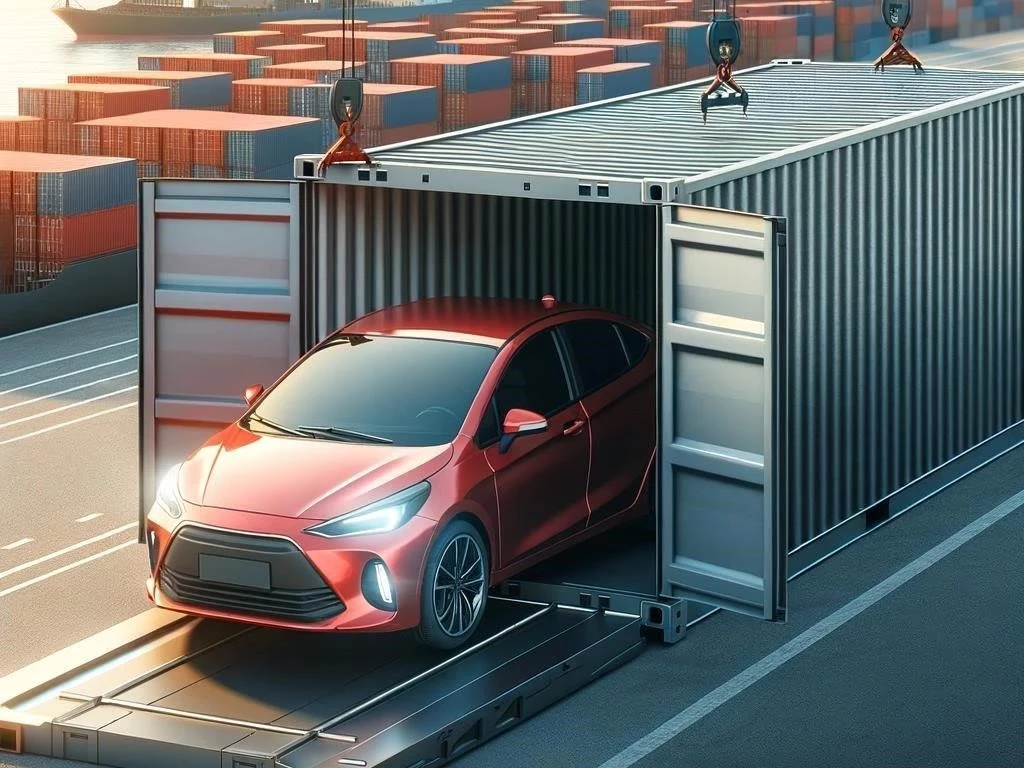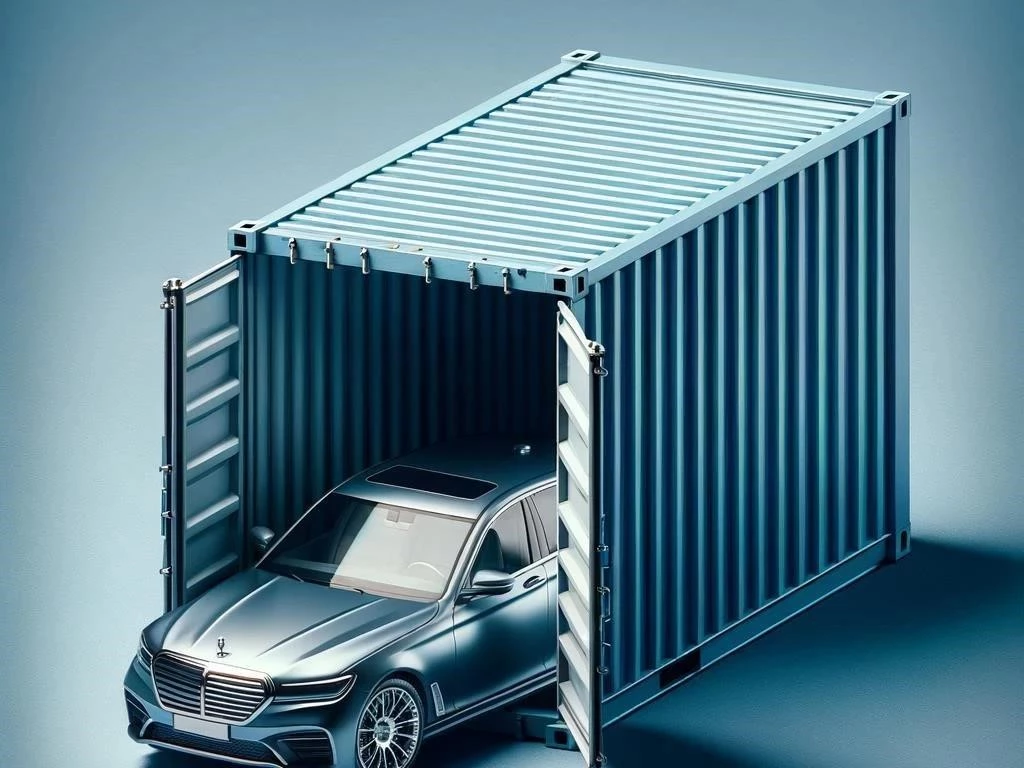Do Cars Fit in Shipping Containers
Cars typically fit in standard shipping containers, depending on vehicle dimensions. Containerized transport ensures safe, efficient car transport for international shipping and vehicle import/export operations.
Understanding Shipping Containers
Shipping containers offer various dimensions, accommodating different vehicle sizes. Proper selection ensures efficient vehicle storage and safe transport during automotive logistics and international shipping operations.
Container Dimensions and Capacity
When considering container dimensions and capacity, standard shipping containers typically measure 20 or 40 feet in length. The internal dimensions of a 20-foot container generally allow for vehicles up to 16-17 feet in length, making it suitable for most cars. A 40-foot container, however, can accommodate larger vehicles or multiple cars, depending on their dimensions. It’s essential to consider height and width as well, as some vehicles may not fit due to their size. Additionally, the container capacity is crucial for ensuring that the vehicle is securely loaded and protected during transit. Proper assessment of vehicle dimensions and container specifications is vital to successful car transport using containerized shipping methods in the automotive logistics industry.
Types of Shipping Containers
There are several types of shipping containers designed for various cargo, including cars. Standard dry containers are the most common and suitable for most passenger vehicles. However, for larger vehicles or specialized transport, high cube containers offer additional height. Additionally, open-top containers facilitate loading taller vehicles, while flat rack containers provide a solution for oversized cargo. Some containers are specifically designed for vehicle shipping, equipped with features that enhance protection during transit. Containerized transport methods can vary based on the vehicle’s dimensions and shipping requirements. Understanding the different types of containers available is crucial for successful car transport, ensuring compliance with shipping regulations and optimizing vehicle storage during international shipping operations.
Car Transport and Vehicle Shipping
Cars generally fit in shipping containers, depending on their dimensions. Proper selection ensures safe vehicle transport, optimizing space and logistics during international shipping operations.
What is Vehicle Shipping?
Vehicle shipping refers to the transportation of automobiles using various methods, including containerized transport. It involves moving cars from one location to another, often across international borders. Shipping containers are commonly used to protect vehicles during transit, ensuring they remain secure and free from damage. The fit of a car within a shipping container depends on the vehicle’s dimensions and the container’s specifications. Most standard containers can accommodate typical passenger vehicles, while larger models may require specialized containers. Proper planning and assessment of vehicle size are crucial for successful shipping. Vehicle shipping plays a vital role in the automotive logistics industry, facilitating car import/export and meeting customer demands efficiently while adhering to shipping regulations.
Benefits of Using Shipping Containers for Car Transport
Using shipping containers for car transport offers numerous advantages, particularly regarding safety and security. Containers provide a protective environment, safeguarding vehicles from external elements, theft, and damage during transit. Their standardized dimensions ensure that most cars fit comfortably, optimizing space for efficient loading and unloading. Containerized transport also allows for easy stacking, maximizing cargo capacity on ships or trucks. Furthermore, it simplifies customs clearance for international shipping, as containers can be sealed, streamlining the inspection process. The controlled environment within containers minimizes risks associated with long-distance transportation, ensuring vehicles arrive in excellent condition. Overall, utilizing shipping containers enhances the efficiency of automotive logistics and helps reduce shipping costs while providing reliable transport solutions.

Loading Cars into Shipping Containers
Cars can fit in shipping containers when properly loaded. Ensuring correct vehicle dimensions and using appropriate loading techniques are essential for safe transport and logistics.
Preparing Cars for Containerization
Preparing cars for containerization is crucial to ensure a proper fit and protection during transport. First, assess the vehicle’s dimensions, including height, width, and length, to confirm compatibility with standard shipping containers. Remove any loose items and personal belongings from the car to prevent damage and ensure maximum space utilization. It’s also advisable to check fluid levels and tire pressure, as well as to disconnect the battery for safety. Additionally, consider documenting the vehicle’s condition with photographs, which can be useful for insurance purposes. Properly securing the vehicle inside the container is essential to avoid movement during transit. Following these steps ensures that cars fit well and arrive safely at their destination during shipping operations.
Techniques for Loading Cars
Loading cars into shipping containers requires careful techniques to ensure a secure fit and prevent damage. First, use a ramp or a specialized loading dock to facilitate smooth entry into the container. Position the vehicle at a slight angle to navigate tight spaces easily. Always engage the parking brake and turn off the ignition to prevent accidental movement. Utilize wheel chocks to secure the tires and prevent rolling during transport. Additionally, employ straps or tie-downs to firmly hold the vehicle in place, reducing shifting during transit. For larger vehicles, consider using a flat rack or open-top container. Proper loading techniques are essential for ensuring that cars fit securely and arrive intact at their destination during shipping operations.
Shipping Methods for Cars
Cars can fit in shipping containers, ensuring secure transport. Various shipping methods accommodate different vehicle sizes, optimizing logistics and enhancing safety during international shipping operations.
Containerized Transport vs. Open Transport
Containerized transport offers significant advantages for fitting cars into shipping containers compared to open transport. With containerized shipping, vehicles are enclosed within cargo containers, providing protection from environmental factors, theft, and damage during transit. This method accommodates standard-sized vehicles, ensuring they fit securely within the container’s dimensions. In contrast, open transport exposes cars to the elements and potential hazards, increasing the risk of damage. Containerized transport also simplifies logistics, as containers can be easily stacked and handled, maximizing efficiency. Furthermore, it streamlines international shipping processes, facilitating customs clearance. While open transport may be more cost-effective for some situations, containerized transport remains the preferred choice for valuable or delicate vehicles requiring enhanced security and protection during shipping.
International Shipping of Vehicles
When considering international shipping of vehicles, the question of whether cars fit in shipping containers becomes paramount. Shipping containers are designed to accommodate various vehicle sizes, with standard dimensions typically sufficient for most passenger cars. Proper measurement of vehicle dimensions is essential to ensure a secure fit, preventing damage during transit. Containerized transport safeguards vehicles against external elements, reducing risks associated with international shipping. Additionally, customs regulations must be adhered to for successful vehicle import/export, which containerization simplifies. Each country may have specific requirements for vehicle shipping, making it vital to consult relevant regulations. Ultimately, utilizing shipping containers for international vehicle transport provides a reliable solution, ensuring cars arrive safely at their destination.
Shipping Regulations and Costs
Understanding how cars fit in shipping containers involves knowing shipping regulations and costs. Compliance ensures successful transport while optimizing expenses related to vehicle shipping operations.
Understanding Shipping Regulations for Vehicle Shipping
Understanding shipping regulations for vehicle shipping is crucial when considering whether cars fit in shipping containers. Each country has specific rules governing the import and export of vehicles, including documentation requirements, safety standards, and customs duties. Before shipping, it is essential to verify compliance with these regulations to ensure a smooth transport process. For instance, some countries may require proof of ownership, emissions certifications, or inspection reports. Additionally, shipping containers must adhere to international shipping guidelines, ensuring they are appropriately sealed and labeled. Failure to comply with these regulations can result in delays, additional costs, or even the rejection of the shipment. Thus, thorough preparation and understanding of the regulations are vital for successful vehicle shipping.
Estimating Shipping Costs for Car Transport
Estimating shipping costs for car transport involves several factors that influence whether cars fit in shipping containers. The primary cost components include the type of shipping method used, distance, and vehicle dimensions. Containerized transport typically incurs higher fees compared to open transport, but it offers enhanced protection. Additionally, shipping costs are affected by the destination country, as customs duties and taxes may apply. The size and weight of the vehicle also play a significant role in determining container space and associated costs. Furthermore, insurance coverage for the vehicle during transit adds to the overall expense. Conducting thorough research and obtaining quotes from various shipping companies can help provide a clearer picture of potential shipping costs for car transport.
Automotive Logistics and Transport Solutions
Cars generally fit in shipping containers, enhancing automotive logistics. Efficient transport solutions optimize vehicle storage, ensuring safe, reliable shipping during international operations and compliance with regulations.
Managing Vehicle Storage During Shipping
Managing vehicle storage during shipping is essential, particularly when considering whether cars fit in shipping containers. Proper planning ensures optimal use of space within the container, accommodating various vehicle sizes. Before loading, assess the vehicle dimensions to determine how many cars can fit securely. Utilize appropriate loading techniques, such as using wheel chocks and tie-downs, to prevent movement during transit. Additionally, consider the order of loading, placing vehicles based on their destination or delivery schedule. It’s also essential to monitor the container’s weight capacity to avoid overloading, which can lead to shipping issues. Effective management of vehicle storage enhances efficiency, minimizes risks, and ensures that cars arrive in excellent condition at their final destination.
Future Trends in the Shipping Industry for Car Transport
The future trends in the shipping industry for car transport indicate significant advancements in containerization and logistics. As technology evolves, smart shipping containers equipped with IoT devices will enable real-time tracking of vehicles during transit, enhancing safety and transparency. Innovations in container design may allow for better accommodation of diverse vehicle sizes, ensuring that cars fit securely with minimal space wastage. Additionally, the growing emphasis on sustainability will drive the adoption of eco-friendly practices in shipping, such as using alternative fuels and optimizing routes to reduce emissions. Automation in loading and unloading processes will streamline operations, making vehicle shipping more efficient. These trends will ultimately lead to improved service quality and reduced shipping costs for car transport.








